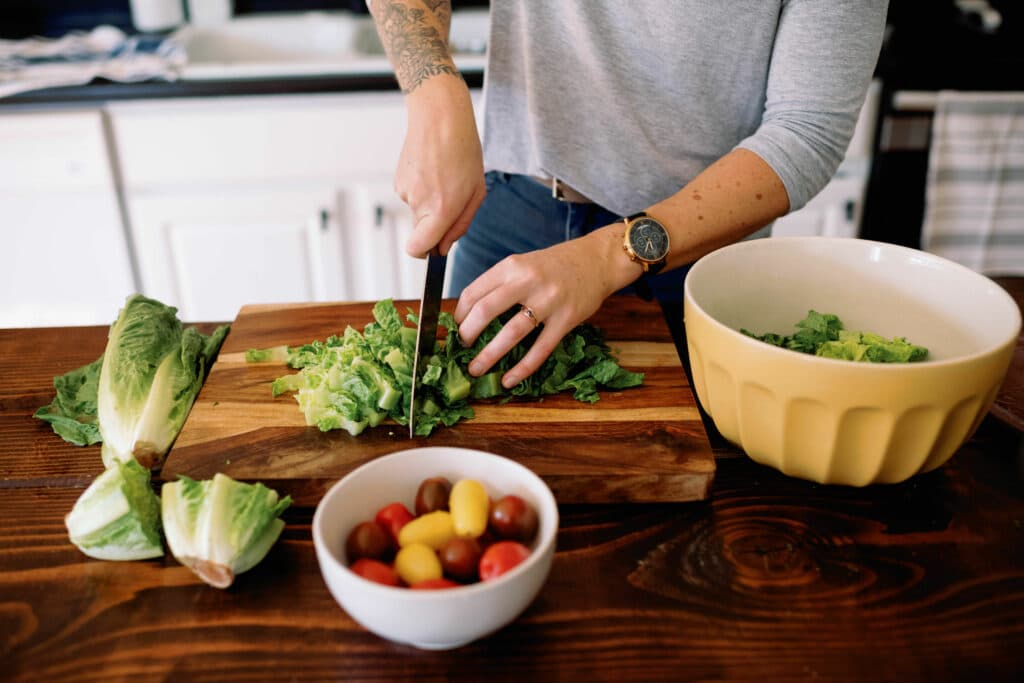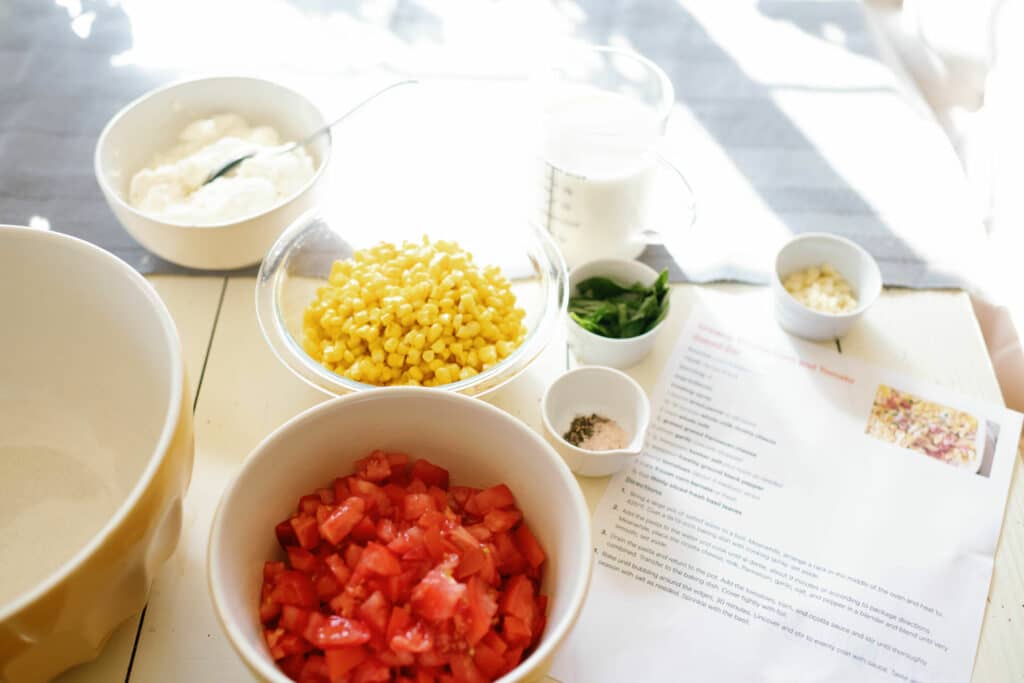I have notes and reminders scribbled in every possible place from sticky notes on my desk to brainstorming flow charts tucked into my weekly planner. I want to know what’s on the agenda, how I can prepare for the upcoming week, and where I need to devote some quality focused attention.
I’m a planner.
I enjoy planning because it’s nice to feel prepared and ready for what’s ahead.
All of this information is vital to my success and growth, but I can’t keep it all in my head all the time, which is why I use tools to keep myself organized. I understand the importance of getting my schedule out of my head and down on a piece of paper or into my digital calendar. I have surrendered to the fact that my brain will never be reliable enough to remember all the things, large and small, and so I have to outsource.

When it comes to meal planning, there is literally no way I can keep everything straight without some help. There are very few recipes I have memorized, I never remember what I decided we should eat for dinner, and a mental shopping list is the quickest way to guarantee I will be making another trip to the store.
Meal planning prevents me from being a frustrated wreck when dinner comes around and I have no clue what to make. It’s a time and money saver, but most importantly, it frees up valuable brain space. Creating a meal plan prepares me for the week ahead and gives me peace of mind that I am organized and can feed my family.
Now that I’ve covered the greatness of meal planning, let’s talk about why it’s flawed.

The Flaws of Meal Planning
1) So much clutter!
While meal planning does allow us to get ahead and be prepared, the process itself is messy. You need a pile of cookbooks, or all your online bookmarked recipes, at least one calendar to reference, and a handwritten shopping list. It’s a lot of moving pieces to get your meals planned and a grocery list created, which should be a simple task.
2) A lack of organization.
The hardest part of meal planning is creating the shopping list, as all your ingredients and household necessities get written down haphazardly. The lack of organization inevitably leads to backtracking across the grocery store for random items because you didn’t see them on the list.
3) Math is hard.
Even if you’re not a regular meal planner, you’ve probably made a meal plan for a holiday meal or family gathering. Scaling recipes for larger (or smaller) groups of people can be tricky because #math! Manually updating the serving size of multiple recipes (potentially with lots of fractions and different units) to meet the number of people you’re feeding is labor intensive and not always accurate.
4) It’s not reliable.
That persnickety paper shopping list. It gets left at home every. single. time.
5) It’s inefficient.
Time is our most valuable resource. We are always trying to maximize our time so we can spend more time doing what we love. But meal planning with cookbooks, calendars, spreadsheets, and handwritten shopping lists is not an efficient use of our time.
Creating an organized shopping list takes time. Shifting through cookbooks and deciding what sounds good takes time. And if we don’t buy exactly what we need, extra trips to the grocery store take (a lot of) time.

But there is a better way!
We know meal planning has merit in our lives and reduces our mental load, which is why there’s a better way to do it.
At Plan to Eat, we made meal planning digital and streamlined, so you don’t have to put so much time and energy into planning. (And you can get back to doing more of what you love, with the people you love!)
All of the meal planning pitfalls outlined above describe what I call “traditional” meal planning. This form of planning is done on pen and paper or with a complicated spreadsheet. On one hand, it does free up your brain to think about and problem solve in other areas of your life, but on the other, it’s inefficient and unreliable.
Meal planning with Plan to Eat is different.
We take all the aspects of traditional meal planning and transform them into a single, digital resource. All your recipes can be gathered together in the program and organized how you like. There’s a meal planning calendar where you can plan ahead for as much time as you’d like, save meal plans to reuse in the future, and add notes to remind yourself of the other events and obligations in your life.
But the very best part is the automated shopping list. Once you add recipes to your calendar, the shopping list will automatically populate an organized list of ingredients you need to buy. You can add to and refine this list as much as you want, so you buy the ingredients for your recipes, and any other household items you need.
You can access the program from a computer and from our mobile app, so you always have your grocery list with you! You can scale recipes to meet the needs of your family and not waste time calculating how much you need to buy.
If you’re a planner and you already put in the work to meal plan, you can get the same results in less time and with less effort.
Meal planning is meant to reduce uncertainty and stress around meals, let us help you make that a reality with an efficient meal planning system! You won’t have to sacrifice your need for organization and planning ahead because we have all the features you need to organize your recipes and make meal plans that work for you.
Try Plan to Eat today, for free! We don’t take payment info until you are ready to subscribe, so there’s no obligation.
We are a small company with big values around food, community, and health, so if you ever have questions about our program or meal planning contact us at help@plantoeat.com. We are always happy to help and love getting to connect with our customers!





